- Home
- entertainment
- news
- 29 details you may have missed in 'Queen Charlotte: A Bridgerton Story'
29 details you may have missed in 'Queen Charlotte: A Bridgerton Story'
Ayomikun Adekaiyero

- Warning: There are spoilers ahead for "Queen Charlotte: A Bridgerton Story."
- Insider has rounded up callbacks to "Bridgerton" and Easter eggs you may have missed.
In the opening scene, the flowers outside Charlotte's residence represent the Mecklenburg-Strelitz family's coat of arms.
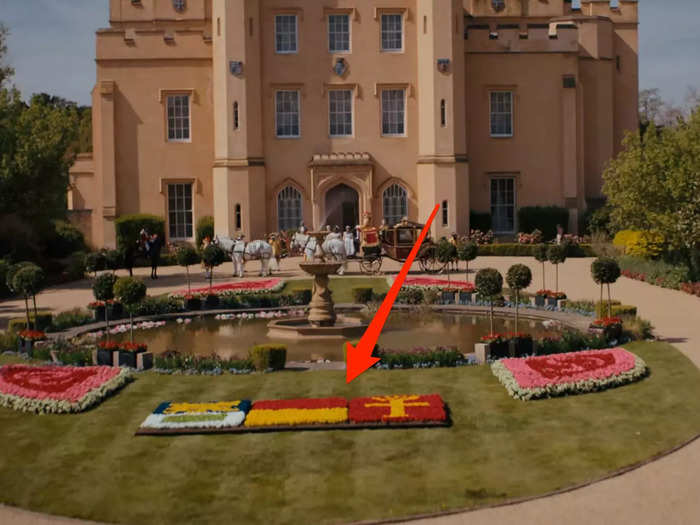
"Queen Charlotte" opens with a picturesque shot of a mansion in Germany. This is the house of the young Charlotte (India Amarteifio) and her family, the Mecklenburg-Strelitzes.
In fact, if fans look carefully at the flowers as the camera pans into the estate, the arrangement depicts the Mecklenburg-Strelitz family's coat of arms. The Mecklenburg-Strelitzes were a real royal family from the 18th century.
The opening scene shows the stark difference between the English and Germans through costume.
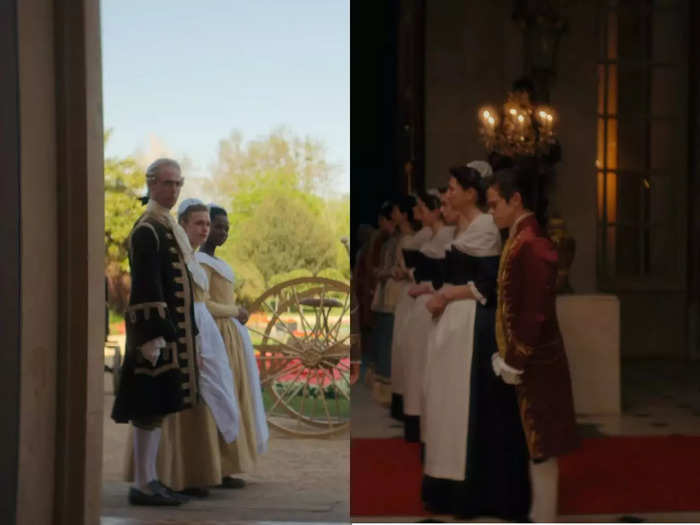
Throughout "Queen Charlotte," multiple characters express how Charlotte's home country of Germany is more progressive and fanciful than England. This is presented clearly in the opening scene.
For starters, while the British royal staff is all white, Charlotte's servants are of various racial ethnicities.
Even the black-and-gold costumes of the German servants are eyecatching, whereas the British servants, shown later in the episode, dress more modestly in blues and reds.
IN the title sequence, Charlotte's reflections and shadows have longer hair, foreshadowing her future.
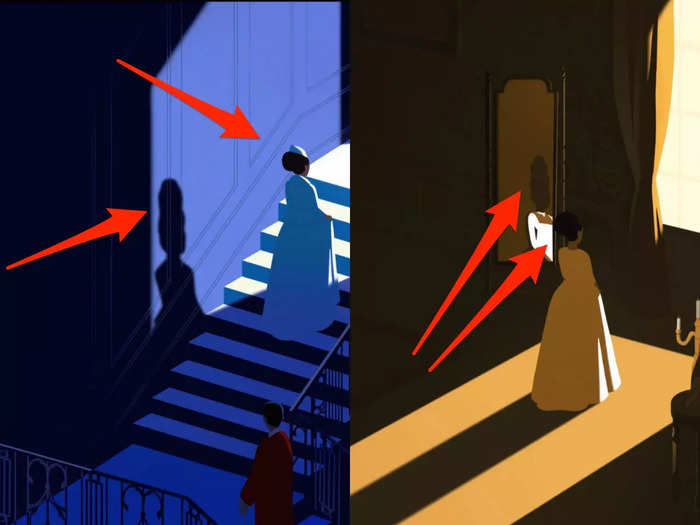
The title sequence of "Queen Charlotte" differs from the flagship show by showing an animated version of Charlotte on her journey to becoming queen.
What is interesting is that the animated Charlotte has short hair, but all the reflections and shadows of Charlotte depict her with large wigs.
This contrasts appears to hint at the journey that young Charlotte goes on to become the Queen Charlotte (Golda Rosheuvel) we know and love.
In the series, young Charlotte (Amarteifio) also wears shorter wigs at first, but they grow in size as the story progresses.
There is an homage to "The Godfather Part II" in the transitions between the two timelines.
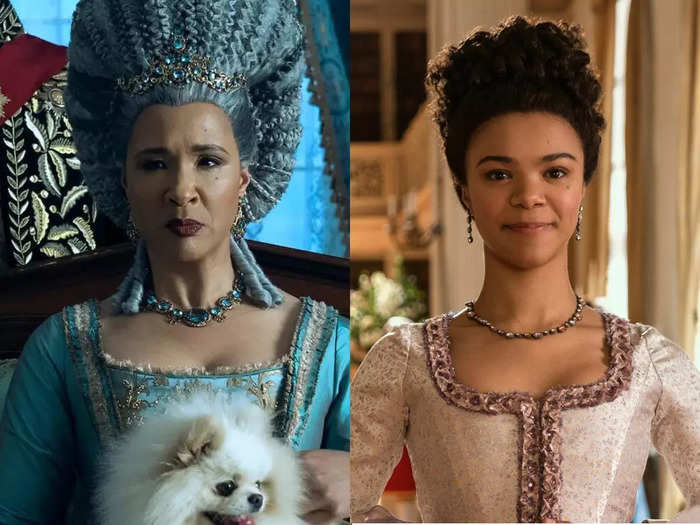
Unlike "Bridgerton," "Queen Charlotte" is set in two timelines. A past timeline exploring young Charlotte's journey and a later timeline featuring the older Charlotte we know and love.
During a panel for the show at the Paley Center for Media earlier this month, director Tom Verica said that the series pays homage to "The Godfather Part II" when it transitions between the two timelines.
Verica said they looked at a lot of examples but were inspired by "The Godfather" scenes where shots dissolve into each other when the narrative moves from Michael Corleone to young Vito Corleone.
According to a press pack, director of photography Jefferey Jur also gave different atmospheric colors to each timeline to differentiate them. The earlier timeline has a green "dreamy and ethereal" look, while the later timeline is "cooler blue" since it is set in wintertime.
While Lady Whistledown narrates the series, we never get a glimpse of Penelope in the spinoff show.
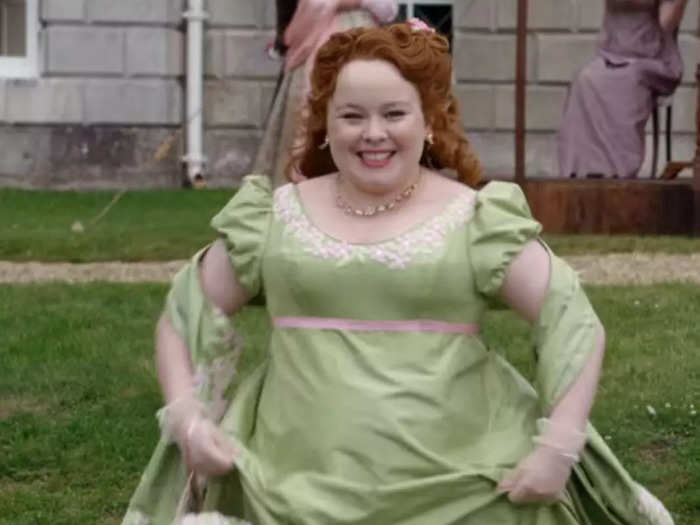
Fans of "Bridgerton" will know that Lady Whistledown (voiced by Julie Andrews), the mysterious writer and narrator of both the flagship show and "Queen Charlotte," is none other than our beloved wallflower, Penelope Featherington (Nicola Coughlan).
However, while Lady Whistledown is still handing out her gossip sheets, we never see Penelope at work.
The closest nod to Penelope secretly being Whistledown is in episode five when adult Violet Bridgerton (Ruth Gemmell) mentions that her daughters, Penelope and Eloise, are fighting, which is a callback to their big fight at the end of season two when Eloise discovered Penelope's secret.
In "Queen Charlotte," Lady Whistledown is narrating life outside of the social season and is focused completely on the royal family, which seems out of character for Penelope. This could mean that Penelope has thrown herself into her work after fighting with Eloise (Claudia Jessie).
Lady Whistledown's gossip sheet dubs the late Princess Charlotte, "The People's Princess."
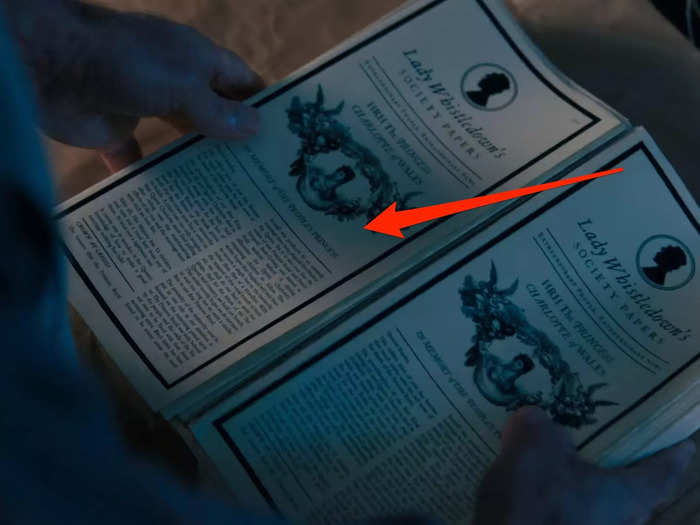
In the later timeline in "Queen Charlotte," the royal family is in crisis.
Charlotte, the Prince of Wales's daughter and Queen Charlotte's granddaughter, dies during childbirth, meaning that the family has no legitimate heir to the throne.
When Lady Whistledown discusses the death in her gossip sheet, she names Charlotte, "the People's Princess," a title which was given to another famous Princess of Wales, Diana.
This may be completely coincidental, but it is not the only reference to another monarch.
In episode six, when Queen Charlotte's son Prince Edward (Jack Michael Stacey) and daughter-in-law Princess Victoria (Florence Dobson) tell her they are expecting a baby girl, the monarch replies: "A strong queen is just what this country needs."
In real life, Edward and Victoria welcomed Queen Victoria, who was famous for being a powerful monarch and ruled with an iron fist.
Episode one also has a reference to "Scandal" through Charlotte's wedding dress.
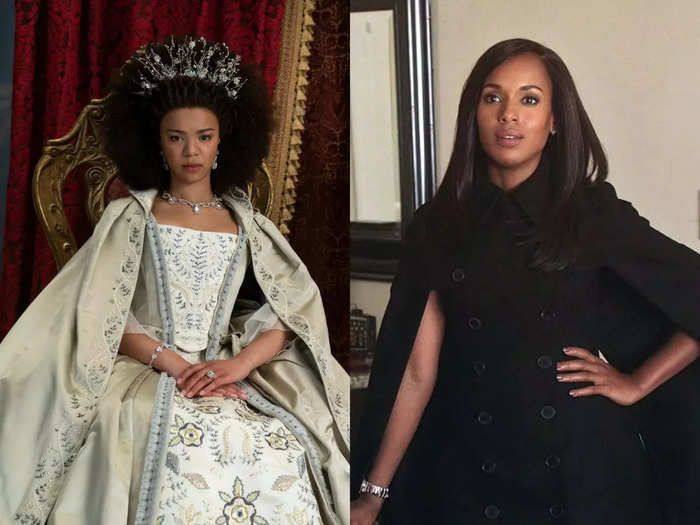
According to the press notes, Charlotte wears a cape with her wedding dress as an homage to the "Scandal" character Olivia Pope (Kerry Washington), who was famous for wearing capes in the hit series.
"Scandal" was created by Shonda Rhimes, and several of the creatives involved in "Queen Charlotte," including director Tom Verica and costume designer Lyn Paolo, worked on the series.
The press notes also say that young King George's (Corey Mylchereest) outfits have modern influences and are inspired by Timothée Chalamet, Prince, and Mick Jagger.
A painting of Queen Victoria and other paintings created after Queen Charlotte's death can be seen in the show.
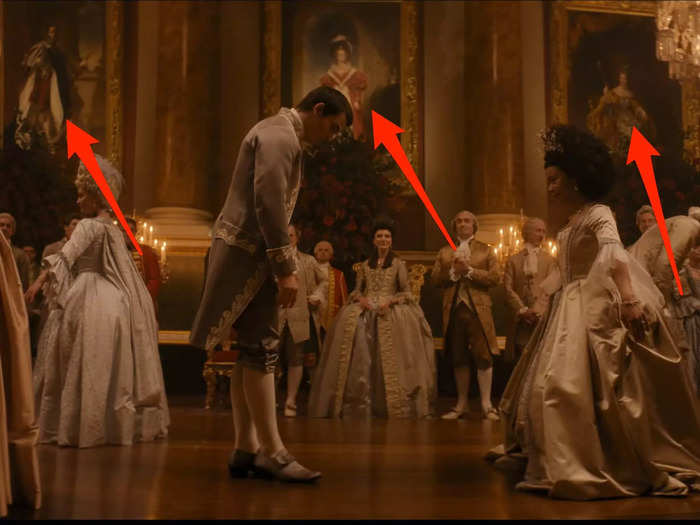
After "Queen Charlotte" launched on Netflix, Dr. Kimberly Chrisman-Campbell, a fashion historian and journalist, pointed out in a Twitter thread that there are several paintings in the wedding dance scene in episode one that are from the wrong time period.
In the scene, we can see portraits of Queen Victoria, her husband Prince Albert, and one of Charlotte's future daughters-in-law, Queen Adelaide.
This could just be a mistake but some fans have theorized that it foreshadows Charlotte's legacy and contrasts with the older Charlotte's obsession with trying to secure an heir since the royal family ends up in a good position anyway.
There is a recurring theme of the lead characters feeling trapped.
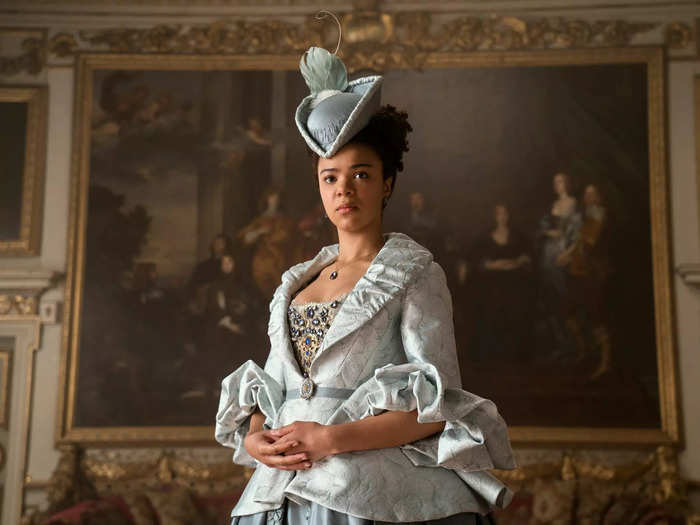
The main arc of "Queen Charlotte" follows young Charlotte and young Lady Danbury (Arsema Thomas) realizing their power and taking hold of their own destinies.
Thus, throughout the season, there are themes of these characters being caged or choosing to be imprisoned.
In episode one, young Charlotte is literally caged in numerous ways — the tight whalebone corset restricting her movements, the wall that stops her from escaping the palace, and even being forced, initially, to wear traditional British clothing to the wedding.
This theme is revisited in episode three when Lady Danbury chastises the queen by saying her "palace walls are too high," implying that she is too ignorant to understand her own power.
King George (Corey Mylchereest) and Lady Danbury's own imprisonments via circumstance are also portrayed, such as George freeing the Pomeranian while he is trapped by Doctor Monro in episode four, and in episode five, when Lady Danbury is trapped wearing black clothing after her husband's death.
This culminates in the season finale when Charlotte brings up the "palace walls" again at the royal ball. At this point, Charlotte has finally accepted her role as queen, hence her walls are a sign of strength, not ignorance.
The older Charlotte is the only one who wears Georgian costumes.
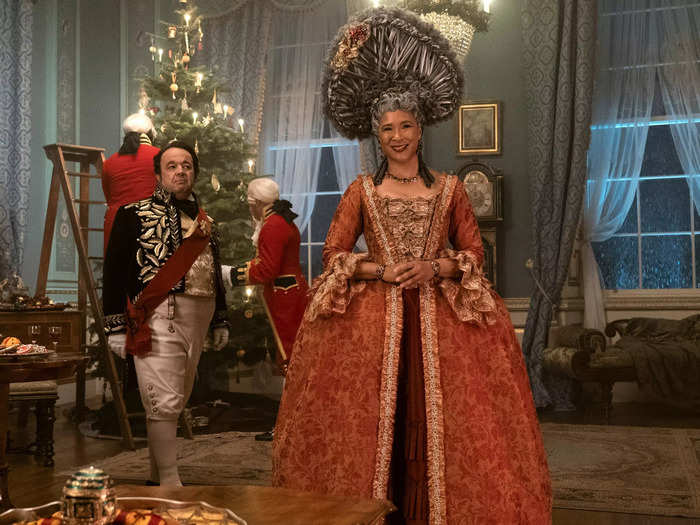
In contrast to the past timeline, the older Queen Charlotte is permanently trapped in the latter timeline due to King George's illness.
Her secretary Brimsley (Hugh Sachs) points out to the queen in episode three that Charlotte's family struggles to move on to find their own partners and lives because they are worried about their mother being "trapped in time."
Many fans have also pointed out that Charlotte is the only character who wears Georgian-era clothing, compared to the Regency outfits of the other characters in the later timeline.
Laura Frecon, a costume designer for "Queen Charlotte," said in the press notes that the reason for the Georgian costume is because it is the only way the older King George (James Fleet) will recognize her.
"We were trying to justify why our 'Bridgerton' Queen Charlotte stayed in that same Georgian era dress shape; it was a backwards evolution. Why did she not change? Why is she not dressed in Regency fashion in 'Bridgerton?'" Frecon said.
"For us, it was about her love story. This is the style she wore when she met her husband, when he still recognized her. So there was a great sadness surrounding that piece of her costumes."
The only needle drops are all songs by African-American women.
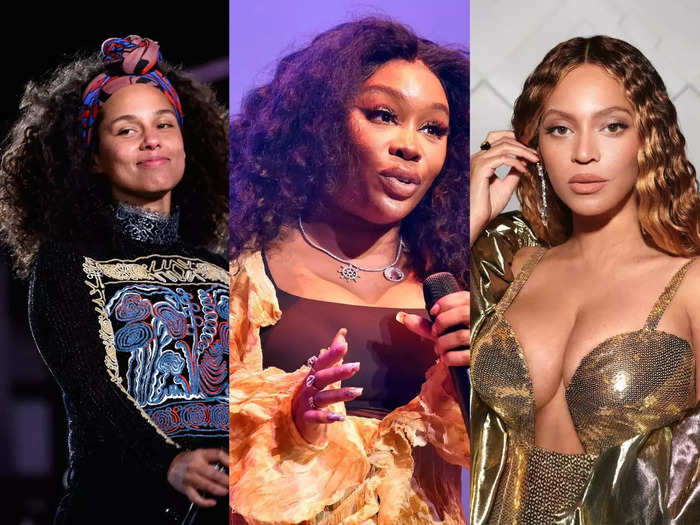
A "Bridgerton" season is incomplete without the signature orchestral covers of modern songs.
For "Queen Charlotte," every cover is a song by an African-American woman, including three songs by music legend Beyoncé.
The soundtrack also includes R&B artists Alicia Keys, Whitney Houston, and SZA.
Queen Charlotte said that she drew pictures to explain sex to her daughters, similar to the instruction she received from Lady Danbury.
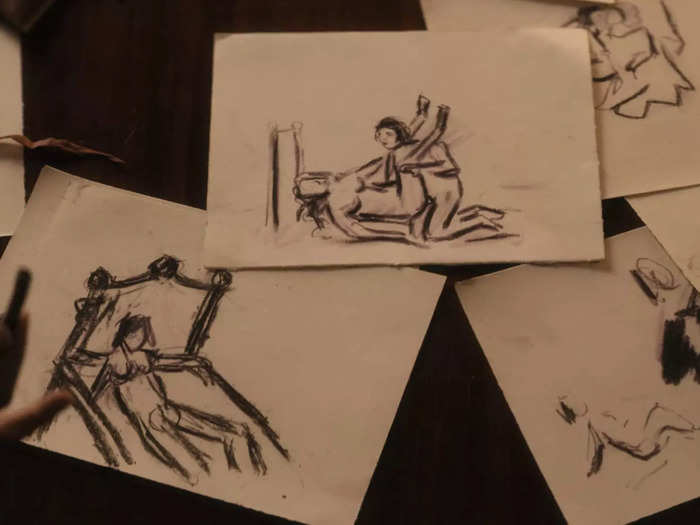
During the penultimate scene in episode one, Charlotte chastizes her children for not getting married and producing children for the royal family. She even mentions that she drew diagrams for her daughters to understand what sex is.
In episode two, there is a callback to this when we find out that Lady Danbury did the same for Charlotte when she was clueless about sex upon marrying George.
Jacqueline Avant inspired "Queen Charlotte."
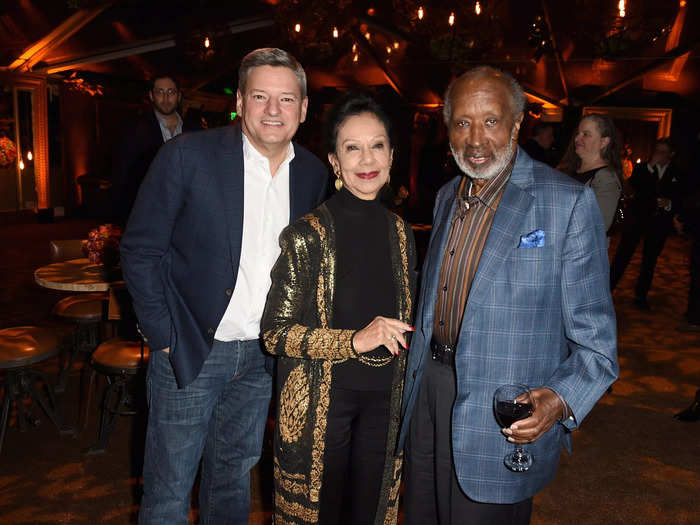
After episode one, there is an in-memoriam tribute to Jacqueline Avant.
Avant was the mother-in-law of Netflix CEO, Ted Sarandos, and inspired the "Queen Charlotte" series, according to showrunner Shonda Rhimes.
"The way I even got into making this story was, one, I've always been obsessed with Queen Charlotte. She's a fascinating character. And I've always been obsessed with Lady Danbury and Violet, and those people don't always get to get their stories told to the fullest," Rhimes is quoted in a press pack for the show.
"But what really pushed it was Ted Sarandos, who called me up and said, 'My mother-in-law is obsessed with Queen Charlotte. Do you want to do a Queen Charlotte story?' And I immediately said yes. Not just because it was Ted, but because I loved the idea."
When Queen Charlotte goes to the library, she picks a book about astronomy.
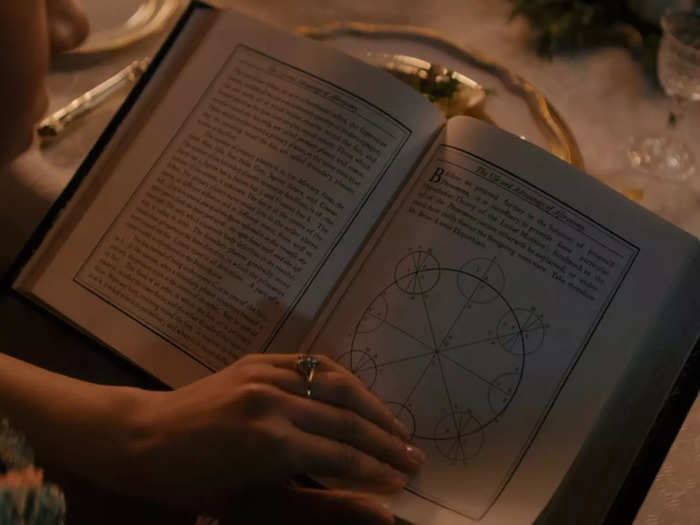
In episode two, we see a montage of Charlotte trying to enjoy her honeymoon with George. At one point, she picks out a book and she is later seen reading the book at dinner.
While the name of the book is unclear, it's clearly about astronomy, which indicates that the young queen is trying to understand the subject as a way to understand George, or at least get closer to him.
The show uses purple and gold patterns in Lady Danbury's clothing to represent her individuality.
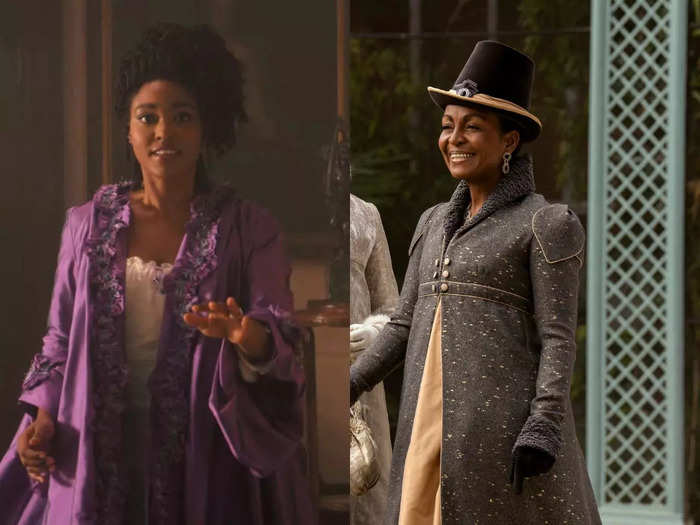
If you watch Lady Danbury closely in both timelines, she mostly wears two colors.
First is gold, which the young Lady Danbury (Arsema Thomas) starts off wearing because it is her husband's favorite. Meanwhile, the older Lady Danbury (Adjoa Andoh) wears her signature dark purple.
As the series progresses, the young Lady Danbury starts to wear more purple as she finds her individuality, while the older Lady Danbury goes back to gold as she reminisces about her late husband.
For example, young Lady Danbury is seen in purple in the episode three scene when she tells Coral about Lord Danbury's death. Meanwhile, the older Lady Danbury is wearing a black-and-gold dress when she tells Violet Bridgerton that she only found love after her husband died.
Costume designer Lyn Paolo said: "By the end of our story, our 'Bridgerton' Lady Danbury is wearing gold again because she's figured out that none of it matters, and she can be happy without a man and still wear this color. Basically, she's saying, 'I can do whatever I want.'"
"There is this transition with Agatha, from these colors that her husband liked into the colors that she likes, and there's this segue with Lady Danbury where the reverse happens, because she's lived this great life. She chose not to marry again. She chose not to bear more children for someone else. She chose to be an independent woman and all of a sudden, she's wearing the colors that Agatha wore and hated — but now she's strong enough to go, 'I can wear that. It's fine.'"
During a montage in episode two, Violet Bridgerton is seen looking after two children.
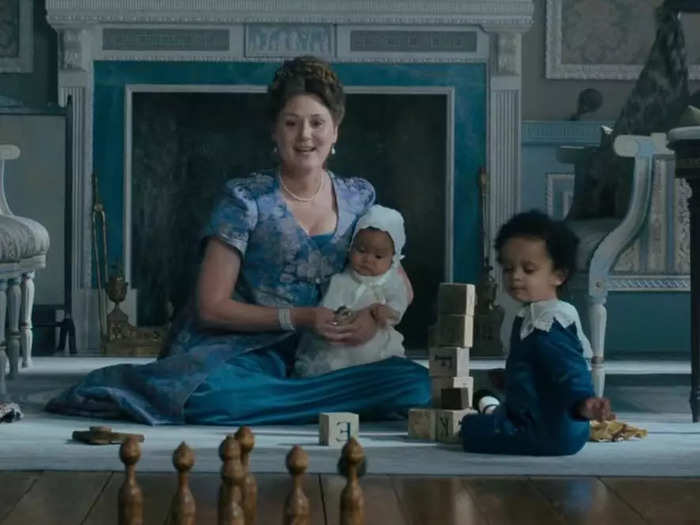
Season two of "Bridgerton" introduced Daphne Bridgerton (Phoebe Dynevor) and Simon Basset's (Regé-Jean Page) first child, Augie, after they got married in season one.
However, during a montage set in the later timeline in episode two, Violet Bridgerton is looking after two small children.
This could hint that the season one sweethearts have had a second baby since season two. In the book series, the pair have five children in total.
"Queen Charlotte" explains how Charlotte became obsessed with Pomeranians.
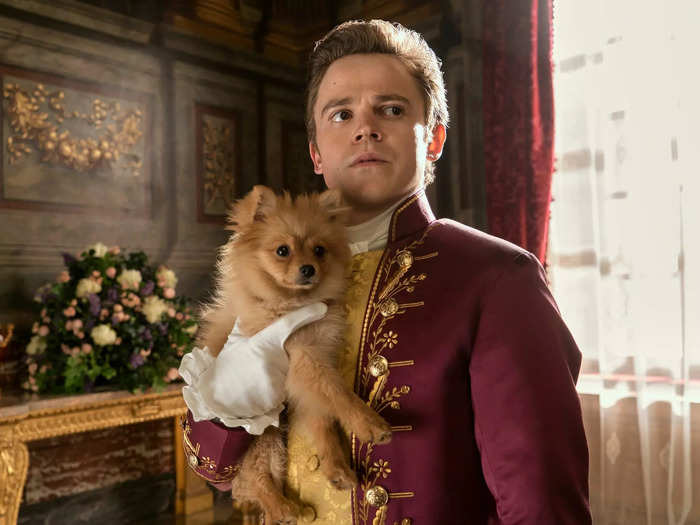
While "Queen Charlotte" focuses on explaining how the Black and white communities of Britain came together, there are also other nods to the main series that you may have missed.
While in "Bridgerton," Queen Charlotte is surrounded by Pomeranians, when the young Charlotte is first given a Pom in episode two of "Queen Charlotte," she calls it a "deformed bunny" and hates it. Charlotte later grows to care for the dog due to her love for George.
In addition, episode three explains how Lady Danbury became in charge of hosting the first ball of the season. It was actually an idea given to her by her husband Lord Danbury, who is trying to be accepted by the ton as a member of society. While Lady Danbury faces opposition at first, she pushes ahead and eventually gets Charlotte to help her make the ball a success.
Finally, when we meet 12-year-old Violet Bridgerton (Connie Jenkins-Greig), she is just as much inquisitive and revolutionary as her future daughter, Eloise Bridgerton. This may be a hint at why Violet is so keen to get Eloise to get married in "Bridgerton" season two because she sees herself in her.
"I am born for the happiness or misery of a great nation" is a real quote from King George III.
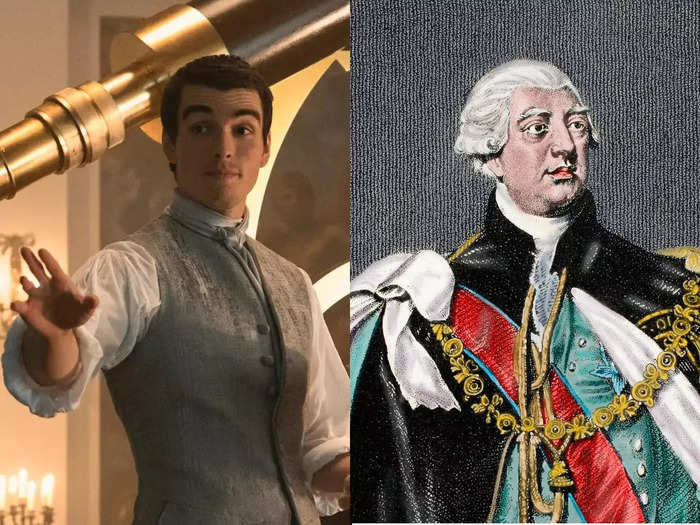
During the argument with his mother at the end of episode two, young King George says: "It has been abundantly clear since my first breath that I was born for the happiness or misery of a great nation, and consequently must often act contrary to my passion."
This is actually a real quote by the former monarch.
According to History Today, when George fell in love with Lady Sarah Lennox of the Duke of Richmond's family in 1759, he was advised against pursuing the relationship by Lord Bute, one of the king's advisors, who is played by Richard Cunnigham in the series. He then wrote the iconic line in a letter to Bute.
Young George makes another reference to the real king in episode six. While worrying about his speech to Parliament, he states that the public could call him "Mad King George" if he messes it up. The former monarch was known for a long time as "the mad king."
The Ledgers wear blue, similar to the Bridgerton family.
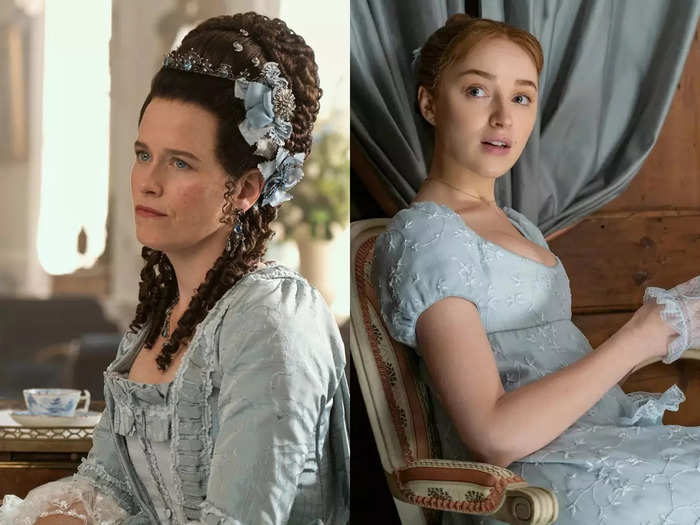
In episode three, we meet young Violet for the first time and her family before she met her husband, Edmund.
Her family, the Ledgers, are often wearing light blue clothing, similar to the Bridgerton family in the main series.
According to the press notes, this is on purpose to foreshadow Violet's future colors.
There appears to be a genuine portrait of the real Charlotte on the Christmas tree in episode three.
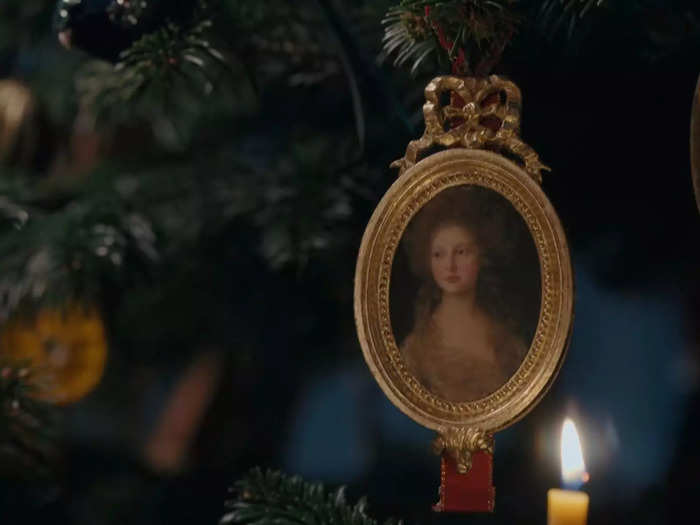
In the later timeline, when Queen Charlotte is getting her servants to decorate the tree, one of the ornaments used appears to be a portrait of the real Queen Charlotte, which differs from the many fake paintings that depict the Queen Charlotte actors.
The portraits of the real Queen Charlotte present her with a fairer skin tone than the Charlotte actors, which is referenced later in episode five when King George's mother Princess Augusta demands that an artist should paint the queen as fairly as possible.
While "Bridgerton" presents the queen as Black, it has been debated by historians whether the real queen actually was.
In episode three, Violet first brings up making hats with her father.
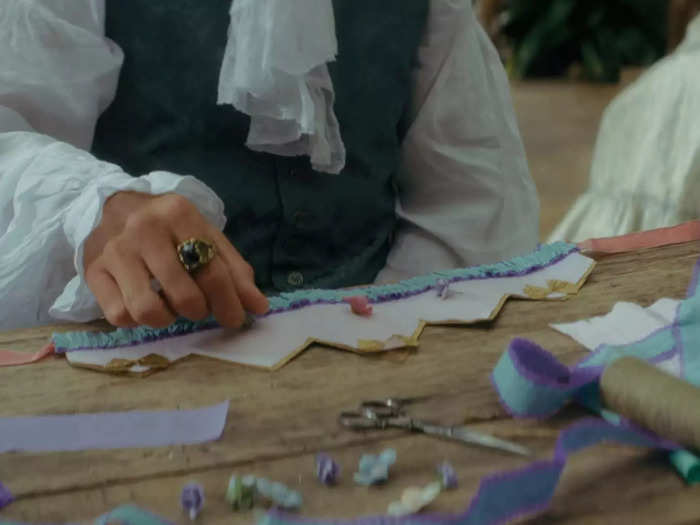
In episode three, when the older Violet is mourning her former husband with Lady Danbury, the Bridgerton matriarch tells her friend that she used to make birthday hats with her father.
This is then referenced later when we see Violet's father in the past timeline make a birthday hat for Lady Danbury. The specific hat he makes uses turquoise and purple-colored paper, which represents their connection through the joining of Lady Danbury's color and his family's colors.
At the ball, the two sides of the ton perform very different dance moves.
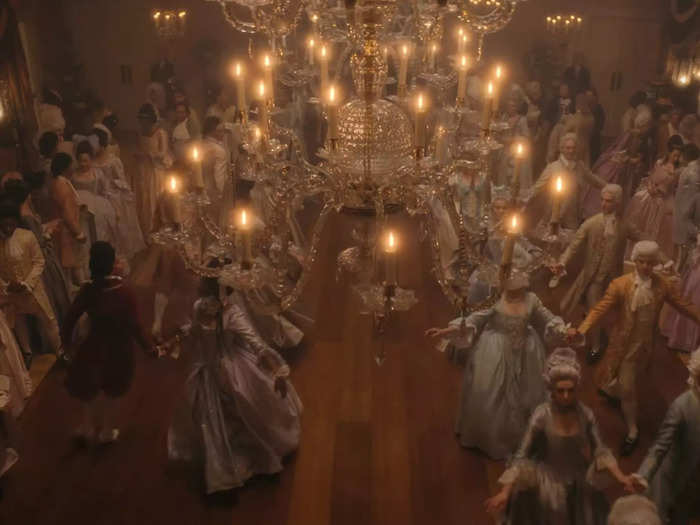
The Danbury ball shows clearly the initial divide between the old ton and the new members of the ton.
At one point during the dance, you can see the two sides performing very different dance moves.
When Queen Charlotte and George arrive and dance together, the two sides finally integrate and do the same dance.
George's costumes feature floral detailing to represent his love of farming.
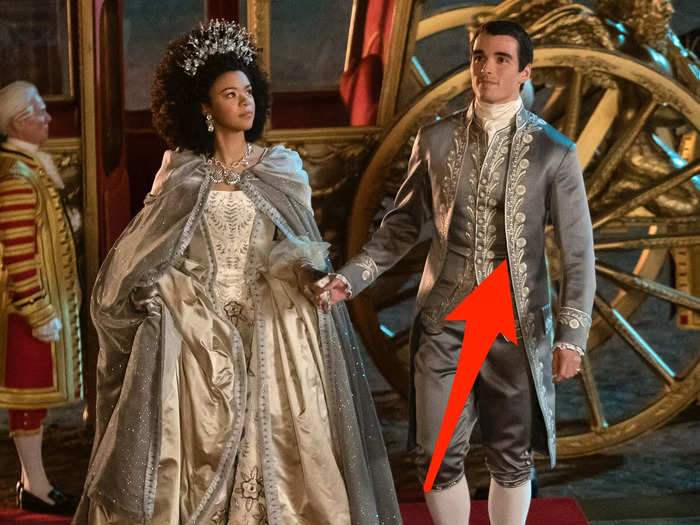
King George states clearly across the series that he loves farming and would rather do that than be a king. Hence, the floral decorations on George's formal outfits seem like a nod to this.
According to the press notes, the uniforms the staff at Kew Palace wear also have a floral motif for the same reason.
When Lady Danbury talks to her maid Coral about her former husband in episode five, a stag ornament is shown prominently.

Stags are a symbol of strength and new beginnings, which are two important themes for Lady Danbury during this part of the story.
She is forced to be strong because she now has to take charge of the Danbury name and secure her family's title after her husband's death. She also is starting a new beginning since she has to find out what her interests are now she is widowed.
Lord Bute and Princess Augusta congratulate each other on the baby rather than Charlotte, who did all the work.
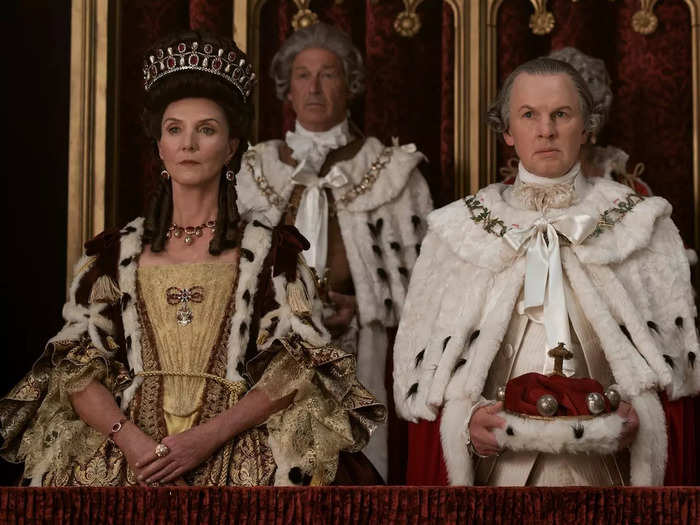
When Lord Bute (Richard Cunningham) and Princess Augusta (Michelle Fairley) find out Charlotte is pregnant in episode five, they congratulate each other, showing how they see the queen as nothing but a baby mule.
This is a recurring theme within the episode, in which no one sees her as a real person until Lady Danbury agrees to be her true friend.
In the series finale, when the older Queen Charlotte realizes that her son and daughter-in-law are expecting a child, she doesn't copy her predecessors and properly congratulates the pair. This callback represents her growth as a mother throughout the season.
Violet uses a lot of floral metaphors to describe love and lust.
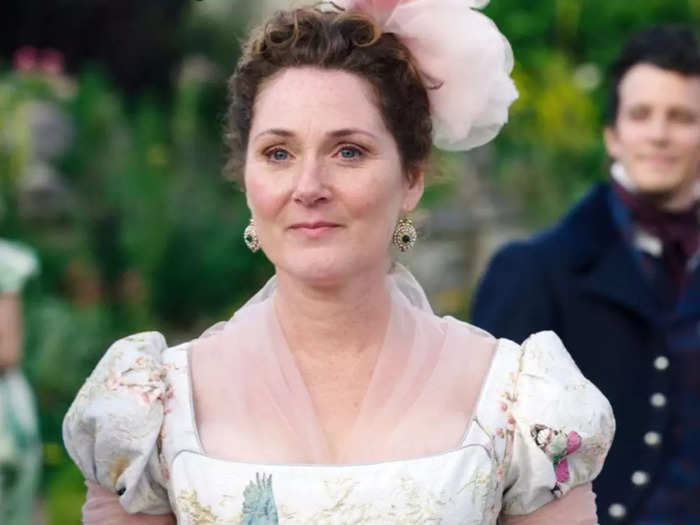
In episode one, Violet talks to the queen about how love "blooms" over time. In episode five, Violet mentions a garden blooming as a metaphor to say she is beginning to have a sexual attraction to men again after the death of her husband.
While the floral theme fits the Bridgertons and the "Bridgerton" universe as a whole, it is interesting that Violet uses the garden metaphor, specifically since that is the setting where her husband died in a flashback in "Bridgerton" season two.
In addition, later on in episode five, we see George's garden slowly die since he is not there to care for it, which seems to be a metaphor for the decaying love between Charlotte and George.
Lady Danbury's tribe is a real tribe from Sierra Leone.
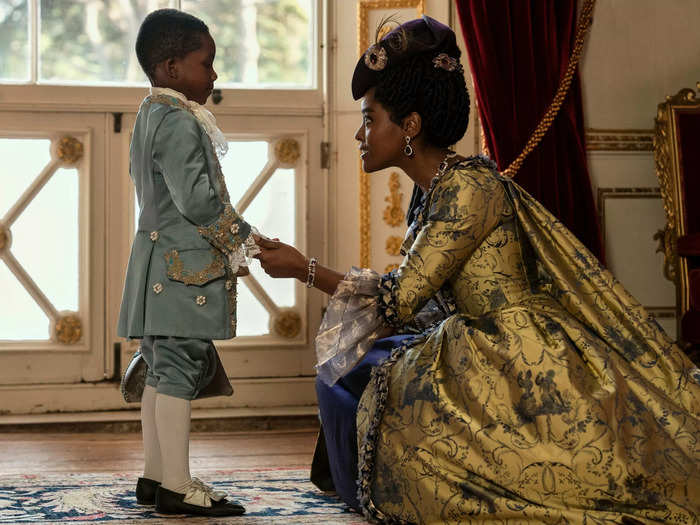
When Lady Danbury tells her son about their family lineage, she mentions that her birth name is "Soma" and that they have the "royal blood of Kpa-Mende Bo tribe in Sierra Leone."
The Kpa-Mende Bo is a subsection of the Mende tribe from Sierra Leone. Soma is the childhood name of a real leader of the Mende tribe, Madam Yoko.
"Bridgerton" author Julia Quinn makes a cameo during a scene where Adolphus and Lady Danbury are taking a walk in episode six.
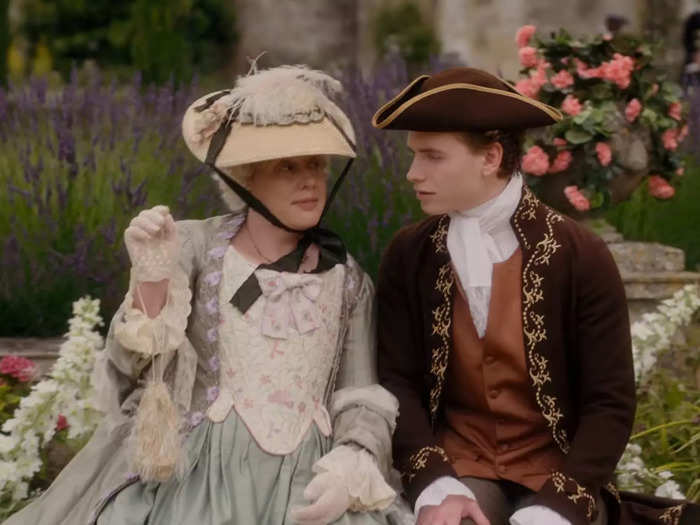
Adolphus (Tunji Kasim) and Lady Danbury walk past "Bridgerton" author Julia Quinn in episode six.
The author told Insider that the cameo was a last-minute addition.
"I hadn't wanted to before because it actually takes a lot of time and I want to be able to see everything," Quinn said. "[I live] so far away from where they film, so I don't get to go very often. But that time I decided to because I had more time on set than I've had before."
Queen Charlotte wears the same emerald necklace in both timelines.
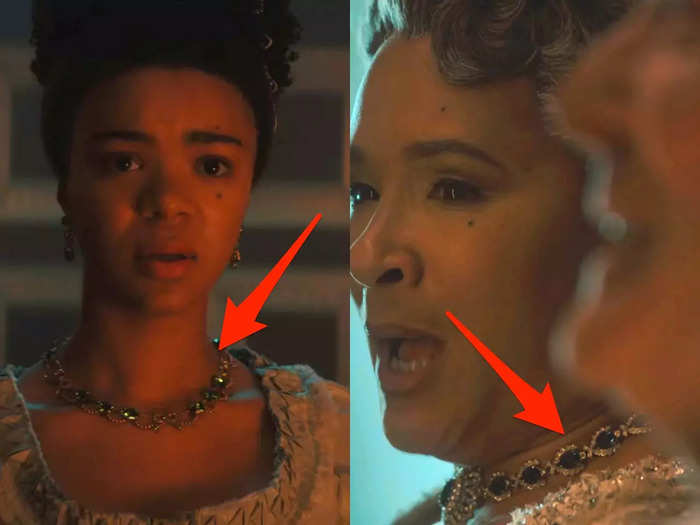
During the scenes in both timelines when George and Queen Charlotte are hiding from the world underneath their bed, the queen wears an emerald necklace.
Queen Charlotte previously stated in "Bridgerton" season two that "her favorite necklace is one of emeralds."
This could hint that the reason Charlotte likes emeralds is so that George can recognize her.
Popular Right Now
Popular Keywords
Advertisement